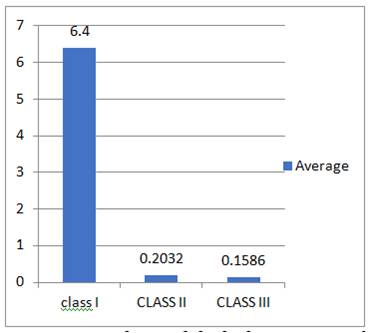Abstract
Lower anterior dental crowding is one of the most common types of malocclusion which occurs in all 3 groups of Angle's classification. The awareness of the general population on orthodontic treatment though is on the rise compared to the western population the awareness among the Indian population is still on the downside. Is it the decreased prevalence in malocclusion or the decreased awareness in spite of the prevalence of malocclusion is the objective of this study. Little's index is used for the evaluation of the amount of crowding by the sum of the distance from the contact point of teeth in malocclusion to the ideal contact point when in alignment. This study involves a sample size of 30 patients with 10 in each type of occlusion. A pre-treatment model of each is taken, and the amount of crowding is calculated using a digital vernier calliper and evaluated it with little's index. It was found that class I had a greater amount of crowding followed by class II and class III. Various studies used different methods to measure the rate of crowding, but overall it was found that class I showed the highest prevalence followed by class II type of malocclusion followed by class III type of malocclusion.
Full text article
Generated from XML file
Authors
Mary Sheloni Missier, Ashwin Mathew George, & Ashok Vardhan N. (2023). Estimating the amount of crowding in different occlusal patterns. International Journal of Research in Pharmaceutical Sciences, 9(4), 1482–1486. Retrieved from https://ijrps.com/home/article/view/4498
Copyright (c) 2018 International Journal of Research in Pharmaceutical Sciences

This work is licensed under a Creative Commons Attribution-NonCommercial-NoDerivatives 4.0 International License.

